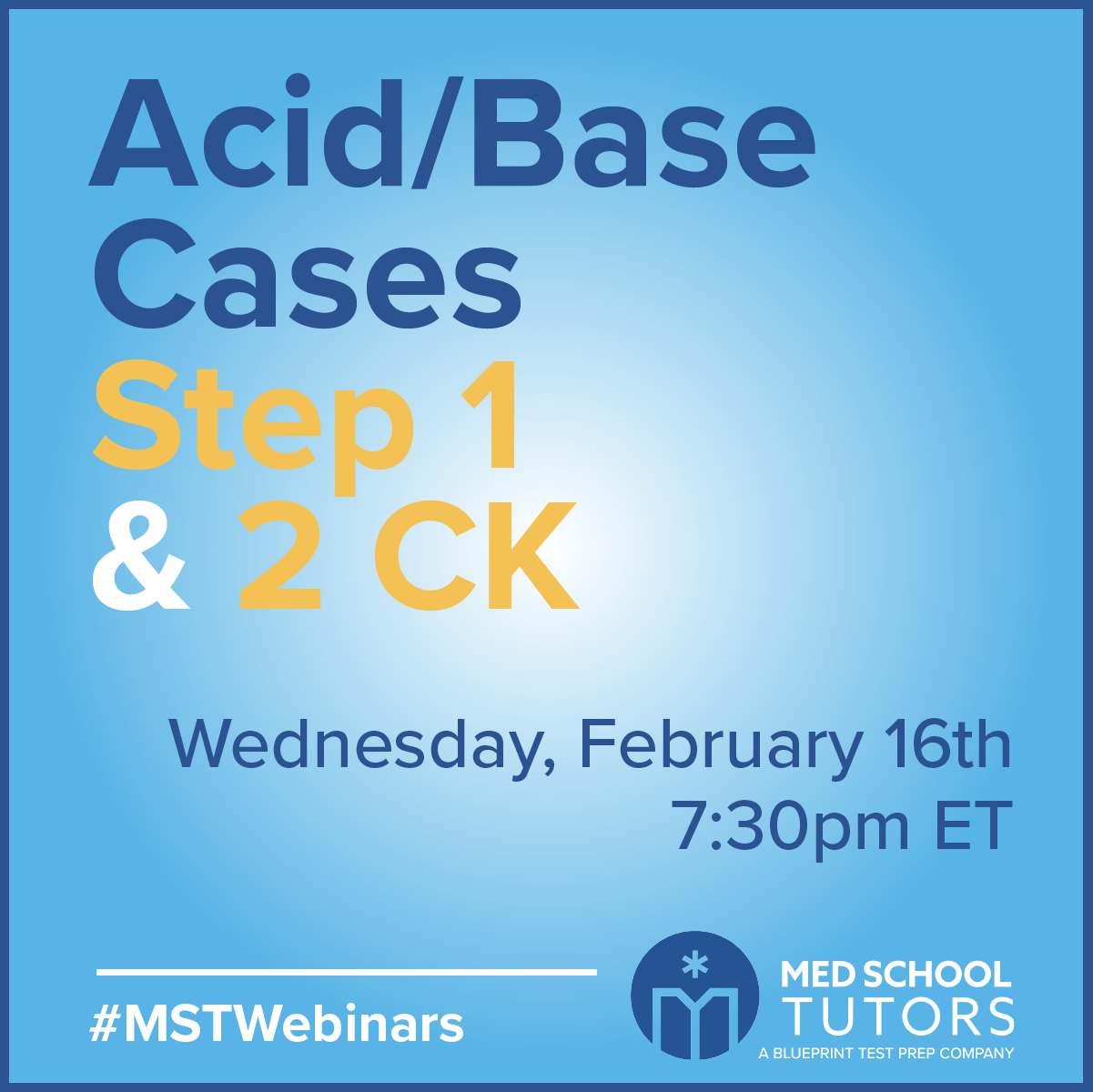Now, That’s What I Call High-Yield: Acid-Base Physiology
- by
- Jan 21, 2020
- Reviewed by: Amy Rontal, MD

The most timeless of USMLE questions is an acid-base question. How elegant a topic! It combines multiple systems (respiratory and renal), involves some basic math, and perfectly lends itself towards multiple choice questions.
And, like nearly all of the questions on your USMLE exams, it is a perfect multi-step question. Gone are the days when you would be given a set of values and told to select which one represents “Respiratory Acidosis with Metabolic Compensation.” Instead, you’ll be given a suffering patient, and have to select which acid-base profile (arterial blood gas) fits their picture.
Perhaps most importantly, no matter your chosen field, you will be treating patients that present with acid-base abnormalities, and will need a firm understanding of the diagnosis of different derangements. I will go out on a limb and say it: this is far more high-yield than any esoteric histopathology or cellular secondary messengers. Learn the material in-and-out from the get-go, and keep it close to you throughout your practice …acid-base physiology isn’t going anywhere.
High-Yield Acid-Base Physiology for USMLE Prep
First, some ground rules:
The key to any acid-base question is to work in an algorithmic approach, starting with the patient’s primary problem, and then evaluating for any concomitant problems or compensations.
An important set of acid-base physiology background rules to keep in mind:
1. No compensation can fully correct (back to 7.4) an acid/base derangement. Two competing primary disturbances (see salicylate poisoning below) can lead to a normal pH.
2. The primary problem will be explained by which side of 7.4 the pH lies in. That is, less than 7.35 is a primary acidemia, and greater than 7.45 is a primary alkemia.
3. Sick (as in ICU sick) patients are generally acidotic; over-diuresed/hyperventilating patients are alkalotic.
4. Shorthand ABG is communicated as pH/CO2/HCO3; occasionally oxygenation is mentioned if that’s important.
5. Your most classic tricky ABG is salicylate (aspirin) poisoning, usually a suicide attempt or accidental pediatric ingestion. This causes a mixed metabolic acidosis/respiratory alkalosis, and can result in a normal pH.
6. Respiratory changes happen quickly, renal compensation can take 2-3 days to appear.
Your classic acid-base physiology vignette goes something like this:
A 62-year old man has fever, rigors, white count of 22,000, and excruciating abdominal pain x 12 hours. He has a past medical history of smoking, hyperlipidemia, atrial fibrillation and hypertension. He endorses stopping his rivaroxaban after hearing some bad press on daytime television. On exam, he has diffuse abdominal tenderness, but no guarding or rigidity. Lactate is 8.0. Which of the following blood gas samples most likely belongs to this patient?
- 7.2/77/27
- 7.2/28/12
- 7.4/40/24
- 7.4/60/14
- 7.5/20/32
The first step in any problem like this to determine if the patient is going to be acidotic or alkalotic. In a septic patient is an elevated lactate, they will certainly be experiencing a lactic acidosis, as reflected by a low pH. This is the primary problem. If you are on top of your game, you’d notice that this patient has likely thrown a left atrial thrombus (off anticoagulation) to a mesenteric gut vessel (e.g., SMA, IMA), and is suffering from acute mesenteric ischemia, with pain out of proportion to exam. Malperfused tissue is dying, and generating lactate, leading to lactic acidosis. Since this is our primary problem, we can eliminate any answers that don’t start with a number less than 7.35.
Next step – Find the CO2 or HCO3 that can explain the information; the one that goes in the expected direction for the problem. When dealing with an acidosis, if it’s due to a respiratory problem (e.g. over-narcotization), find a high CO2. If your acidosis is due to a metabolic (e.g. lactate) problem, find a low HCO3. Because he is suffering from a metabolic acidosis, find an acidotic pH and a low bicarbonate (less than 24). From that alone, we can hone in on choice B.
Final step – look at the third value and make sure it makes sense. In this case, our third value is CO2, the respiratory component in acid-base chemistry. In a patient who has functioning lungs and is producing too much acid, we would expect them to try to blow off acidic CO2 by hyperventilating, in order to compensate. Therefore, we’d want to make sure our CO2 is less than 35. Choice B confirms this – a hyperventilating patient with a CO2 that has gone down to 28.
As you can see, there’s no substitute for doing lots and lots of acid-base problems in an algorithmic, stepwise fashion. As you complete more and more, you will be able to accurately predict the ABG for a patient with a given diagnosis. As we harp on repeatedly, Step 1 is a test of diagnosis. There will be no way around making an accurate diagnosis for the patient in the vignette – only then can you find the correct answer. Let’s close with one more example, and leave some time and space at the end for your questions.
Another acid-base physiology vignette:
A 26-year old man with a history of specific phobia related to air travel obtains a prescription for alprazolam from his primary care physician, as he has a cross country flight planned. He takes his normal prescribed dose, but after a spell of turbulence, takes an additional 2 doses of alprazolam, and drinks 3 alcoholic beverages from the beverage cart. When the man was unresponsive at landing, a non-rebreather was placed with FiO2 1.0 an ABG was drawn. Which of the following ABGs explain his pathology?
- 7.1/28/12
- 7.25/80/26
- 7.4/80/12
- 7.4/45/27
- 7.5/20/21
The diagnosis here should be pretty straightforward: Benzos + EtOH = TOO SLEEPY. And when you are chemically zonked, you are not ventilating. CO2 will build up, and cause a respiratory acidosis.
Step 1: Find acidotic pH’s! Again, choices A and B are in the mix.
Step 2: Find a respiratory cause for acidosis – high CO2! This is seen in choice B.
Step 3: Does the third number make sense? Over the course of a flight, there won’t be enough time for the kidneys to make any major adjustments; remember renal compensations take days. A normal bicarbonate of 26 is as expected for an acute respiratory acidosis. (Contrast this to a COPD-afflicted chronic CO2 retainer who would have an elevated bicarb from years of elevated carbon dioxide levels).
Ok! That should help lay some groundwork. What questions do you have about these crackable exam questions?










